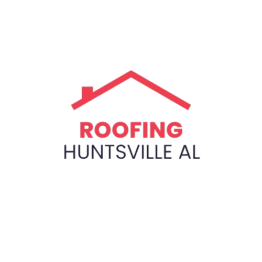Choosing the right roofing system for your home or commercial building is crucial for its protection, durability, and aesthetic appeal. With various options available, understanding the different types of roofing system can help you make an informed decision. This comprehensive guide will delve into the most popular roofing systems, their advantages, and what makes them suitable for different needs and climates.
Asphalt Shingles Roofing Systems
Overview
Asphalt shingles are one of the most common roofing systems in North America due to their affordability and ease of installation. Made from a base mat of organic felt or fiberglass, coated with asphalt, and topped with mineral granules, these shingles come in various styles and colors.
Advantages
- Cost-Effective: Asphalt shingles are relatively inexpensive compared to other roofing system.
- Variety: They come in a wide range of colors and styles, allowing for customization.
- Ease of Installation: Simple to install, which can reduce labor costs.
- Durability: Can last 20-30 years with proper maintenance.
- Fire Resistance: Fiberglass shingles have a higher fire resistance than organic ones.
Ideal For
- Residential homes
- Mild to moderate climates
Metal Roofing Systems
Overview
Metal roofing systems are known for their longevity, durability, and resistance to harsh weather conditions. They can be made from materials such as aluminum, steel, copper, and zinc.
Advantages
- Longevity: Can last 40-70 years depending on the material.
- Durability: Resistant to wind, hail, and fire.
- Energy Efficiency: Reflects solar radiant heat, which can reduce cooling costs.
- Eco-Friendly: Often made from recycled materials and fully recyclable at the end of their lifespan.
- Low Maintenance: Requires minimal maintenance compared to other roofing system.
Ideal For
- Both residential and commercial buildings
- Areas with extreme weather conditions
Tile Roofing Systems
Overview
Tile roofing systems, including clay and concrete tiles, are known for their aesthetic appeal and long-lasting durability. These tiles are often used in Mediterranean, Spanish, and Southwestern-style homes.
Advantages
- Aesthetic Appeal: Offers a unique and attractive look.
- Durability: Can last 50-100 years with proper care.
- Fire Resistance: Highly fire-resistant.
- Energy Efficiency: Provides excellent insulation against heat and cold.
- Low Maintenance: Resistant to rot and insect damage.
Ideal For
- Residential homes
- Hot climates
Slate Roofing Systems
Overview
Slate roofing system are among the most durable and long-lasting roofing options available. Made from natural stone, slate roofs have a distinctive, elegant appearance.
Advantages
- Longevity: Can last over 100 years.
- Aesthetic Appeal: Offers a timeless, sophisticated look.
- Durability: Resistant to fire, rot, and insect damage.
- Low Maintenance: Requires minimal upkeep.
- Eco-Friendly: Natural material with a low environmental impact.
Ideal For
- Historic buildings
- High-end residential properties
Wood Shingles and Shakes Roofing Systems
Overview
Wood shingles and shakes are made from cedar, redwood, and other types of wood. Shingles are machine-cut for a uniform appearance, while shakes are hand-split for a more rustic look.
Advantages
- Natural Beauty: Provides a charming, natural appearance.
- Insulation: Offers good insulation properties.
- Eco-Friendly: Made from natural, renewable resources.
- Longevity: Can last 30-50 years with proper maintenance.
Ideal For
- Historic and rustic-style homes
- Areas with moderate climates
Flat Roofing Systems
Overview
Flat roofing system are commonly used in commercial buildings and some modern residential designs. They can be made from various materials, including EPDM, TPO, PVC, and modified bitumen.
Advantages
- Cost-Effective: Generally cheaper to install than pitched roofs.
- Ease of Maintenance: Easier to inspect and maintain.
- Space Utilization: Can be used for rooftop gardens or additional living spaces.
- Modern Aesthetic: Complements contemporary architectural styles.
Ideal For
- Commercial buildings
- Modern residential homes
Green Roofing Systems
Overview
Green roofing system, also known as living roofs, are covered with vegetation and soil. They provide various environmental and economic benefits.
Advantages
- Eco-Friendly: Improves air quality and reduces urban heat island effect.
- Insulation: Provides excellent insulation, reducing heating and cooling costs.
- Stormwater Management: Absorbs rainwater, reducing runoff and erosion.
- Longevity: Protects the underlying roofing material, extending its lifespan.
- Aesthetic Appeal: Adds a unique, natural element to buildings.
Ideal For
- Urban areas
- Environmentally conscious buildings
Solar Roofing Systems
Overview
Solar roofing systems integrate solar panels directly into the roofing material, allowing buildings to generate renewable energy.
Advantages
- Energy Production: Generates electricity, reducing energy bills.
- Eco-Friendly: Reduces reliance on fossil fuels.
- Incentives: Eligible for various tax credits and incentives.
- Aesthetic Integration: Sleeker and more aesthetically pleasing than traditional solar panels.
Ideal For
- Residential and commercial buildings
- Sunny climates
Synthetic Roofing Systems
Overview
Synthetic roofing system mimic the appearance of natural materials like slate, wood, and tile but are made from synthetic materials such as rubber, plastic, or polymer.
Advantages
- Durability: Resistant to impact, weather, and UV rays.
- Cost-Effective: Less expensive than natural materials.
- Lightweight: Easier to install and doesn’t require reinforced structures.
- Aesthetic Variety: Available in various styles and colors.
Ideal For
- Residential homes
- Areas with varying climates
Conclusion
Understanding the different types of roofing system is essential for making an informed decision that suits your needs and preferences. Whether you prioritize durability, aesthetic appeal, eco-friendliness, or cost-effectiveness, there is a roofing system out there that will meet your requirements. From the widely used asphalt shingles to the environmentally conscious green roofs, each roofing system offers unique advantages.
